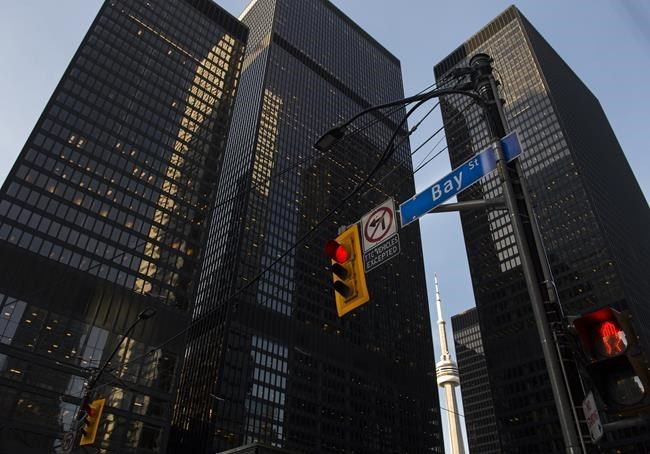The last trading day of the year saw Canada’s main stock index nudge up, rounding out a climb of nearly eight per cent throughout 2023 as investors drew confidence from projections of interest rate cuts to come.
On Friday, gains in the industrials and utilities sectors pushed the S&P/TSX composite index up 29.06 points to close at 20,958.44, even as U.S. markets dipped.
The bump also came despite a slip in battery metals and base metals on the Canadian index. The decrease owed partly to U.S. dollar strength, said Allan Small, a senior investment adviser at iA Private Wealth.
“That tends to take some steam out of those sectors, but overall it's nothing that I would call the start of a trend,” he said.
In New York, the Dow Jones industrial average was down 20.56 points at 37,689.54. The S&P 500 index was down 13.52 points at 4,769.83, while the Nasdaq composite was down 83.78 points at 15,011.35.
A relative lack of movement on any of the main indexes hinted at the ongoing uncertainty about the timing of expected rate cuts in the U.S. as well as Canada in 2024.
“The overall stock market doesn’t move much with what the Bank of Canada does; it’s more what the U.S. does. So when are those first rate cuts coming? Are they coming in March, are they coming mid-year or are they not coming until the second half of the year?” Small asked.
“That’s going to set the tone for the market.”
Despite lingering fears of mild recession, the markets continue to exude a wary confidence heading into the new year. On Wednesday, the S&P/TSX hit a high for the year and came with a coin’s throw of its all-time high in early April 2022.
“We gave it a run to reach all-time highs and we just fell short. But overall markets, the TSX, had a pretty good run the last eight weeks of the year,” Small said.
“Based on the interest rate declines to come, I don't think we're in for any major recession. I don't even think in the U.S. they're in for a mild recession.”
Even amid rising geopolitical tensions across the globe and armed conflict in Ukraine and the Gaza Strip — plus the added angst of a U.S. election in November — reasons for investor hope abide.
“On the upside, the war between Hamas and Israel has not spread to other areas of the Middle East. That's been sort of contained. Even with the Houthi rebels, what the U.S. is doing is they’re leading a task force to make sure that some of these oil companies get their oil through the Red Sea route,” Small said, referring to recent attacks on international shipping by an armed group in Yemen.
U.S. oil production also remains at full tilt as operators pump out 13.5 million barrels a day, more than any other country in the world, easing fears of big price hikes.
“You're going to have to see another major disruption in the world from somewhere to take oil higher. But for now, even with the Saudis maintaining their production cuts, that's not going to do it. The U.S. is definitely picking up the slack.”
All eyes remain on the coming month. “As goes January, so goes the rest of the year,” Small said.
As for trading on Friday, activity was fairly “flat” overall.
“A lot of people on vacation. They’re really not sitting at their desks trading stocks,” he noted, from the Caribbean island of Saint Martin.
The Canadian dollar traded for 75.61 cents US compared with 75.69 cents US on Thursday.
The February crude oil contract was down 12 cents at US$71.65 per barrel and the February natural gas contract was down four cents at US$2.51 per mmBTU.
The February gold contract was down US$11.70 at US$2,071.80 an ounce and the March copper contract was down three cents at US$3.89 a pound.
This report by The Canadian Press was first published Dec. 29, 2023.
Companies in this story: (TSX:GSPTSE, TSX:CADUSD)
Christopher Reynolds, The Canadian Press

